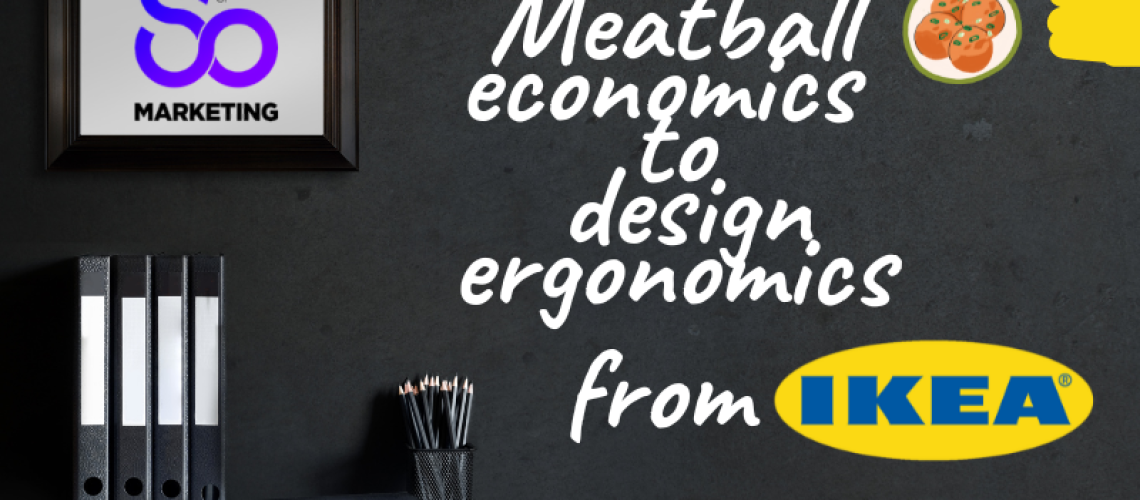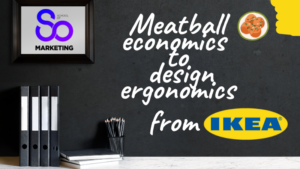“WE ARE GOING.” These are probably the dreaded words that most men shudder from as their partners announce the weekend plan. But, yep, I’m sure we have all been there both in spirit and walked the maze that is IKEA countless times.
But of course, the final persuasion tactic is when they say, “And we’ll get to eat the meatballs”.
There is undoubtedly much truth that the way to a man’s heart is through his stomach. And so it’s fair to say that IKEA has become a global sensation, winning hearts, minds and living rooms all over the world.
So today, I wanted to really figure out what has made this an incredible place to shop. Before I go into detail, let me tell the IKEA story through its recent numbers.
Financial performance
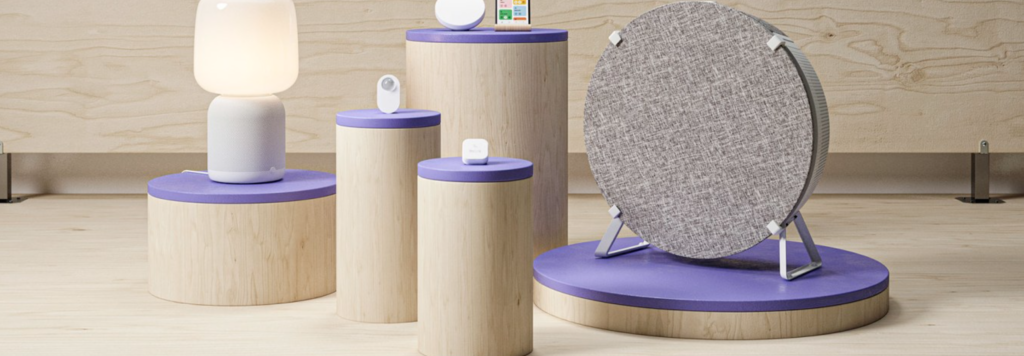
Despite an extremely challenging economic and inflationary environment, IKEA stands out as quite the anomaly. Total FY22 IKEA retail sales reached EUR 44.6 billion compared to EUR 41.9 billion in FY21.
Even their footfall had increased year on year as they welcomed 822 million visitors in FY22 compared to 775 million in FY21. In an extremely turbulent year, they opened 32 new locations around the world, from Puerto Rico to Oman.
Impressive to say the least.
At the very heart of IKEA is a customer oriented approach quite like no other. Here is an extract from their financial report that highlights this:
“This year’s challenges continue to give us perspective into people’s life at home, our business and our priorities.
Homes now fulfil more functions and solve more problems than ever before.
That means people need home furnishings and solutions at an affordable price,” says Inter IKEA Group CEO Jon Abrahamsson Ring.
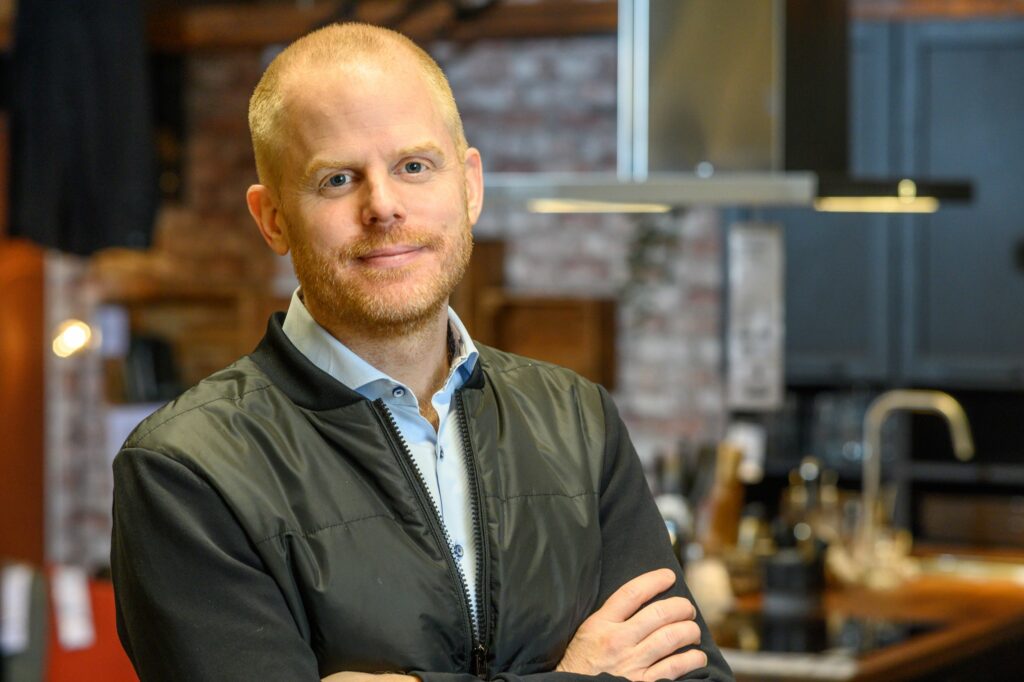
IKEA hits the nail on the head.
Being a typical man, let’s start with the first thing that springs to mind – food. Or rather meatballs.
The economics of meatballs
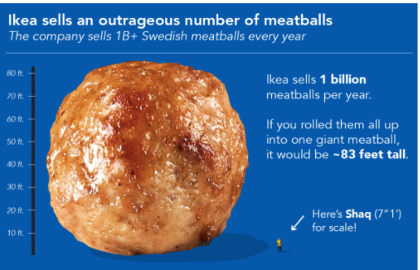
Fun stat; they sell over a staggering 1 billion meatballs each year.
To put that into context, if you stacked up their meatballs, you could create a ladder into space!
Furthermore, did you know that IKEA is the top 20 largest global food retailers!
They make well over $2 billion a year in food sales alone.
Of course, we all know the power of eh meatballs, but did you know there is much science behind them? In fact, Gerd Diewold, IKEAs former US food Ops lead, famously once said “meatballs are the best sofa-seller”.
The concept goes something like this, IKEA wants their customers to spend more time in their stores and not leave because they are hungry. So they want them to initially browse their lanes and shortlist the items they want. Of course they were working up an appetite whilst doing so.
Why?
According to Alison Jing Xu, an associate professor of marketing at the University of Minnesota’s Carlson School of Management, who studies consumer behaviour and hunger’s impact on purchasing decisions.
She found that hungry mall shoppers spent 64% more money than shoppers who were already full.

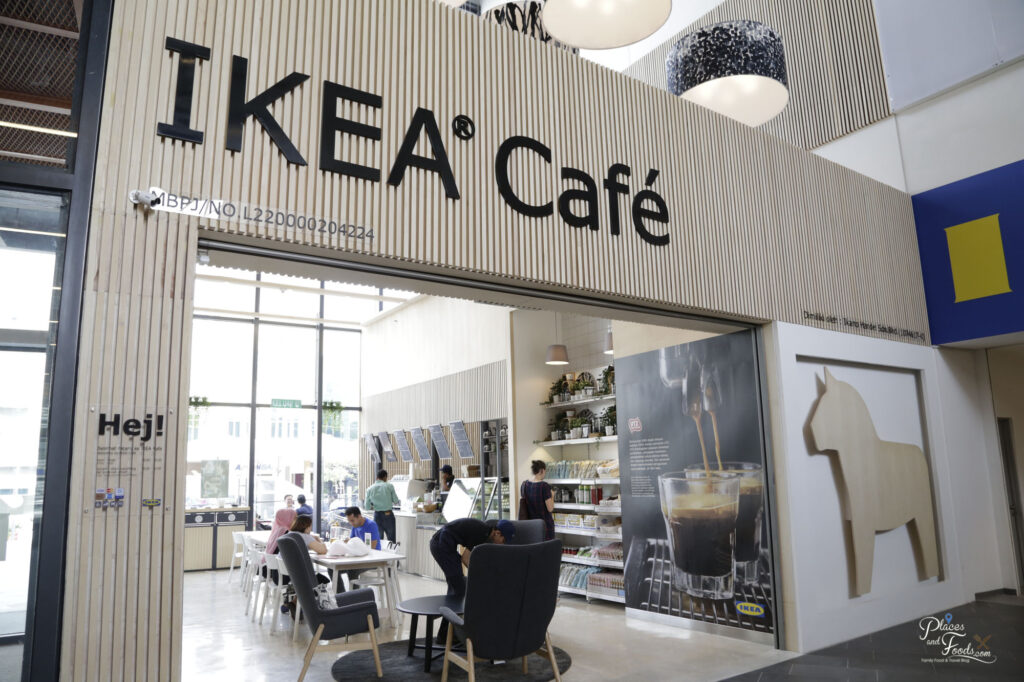
Then Kamprad, their founder who sadly passed away in 2018, envisioned the cafes as a place where customers could sit down, eat, retreat and reflect on how to decorate their living rooms with their short-listed items.
With their tummies full and energised, they were ready to take their final steps towards the flat packs and check out. All with a lot more than they originally intended. Studies estimate that customers spent 2 times more after they eat! It’s a big lesson; feed your customers!
Working up an appetite
Now, have you ever wondered why they have made their stores full of curves and bends? Well their stores are designed to put our emotions and senses into overdrive.
Based on what is known as the Gruen Effect. This describes when people enter a store and are engrossed in an intentionally overwhelming experience. This causes them to need to remember their original reason for going to the shop, so they tend to make more impulse purchases. Customers also need to catch up on time and become engrossed in this new experience.
They have a twist and turn around 50 to 80 metres which takes you into a new household area.
Each gives you a sensory overload to entice you to pick up things in that large trolley.
Not to mention the overuse of mirrors, as they want you to see yourself immersed in the environment around you.
Of course it’s a fixed path, which means they control your journey around the store and strategically place items that are meant to be impulse purchases alongside larger ones.
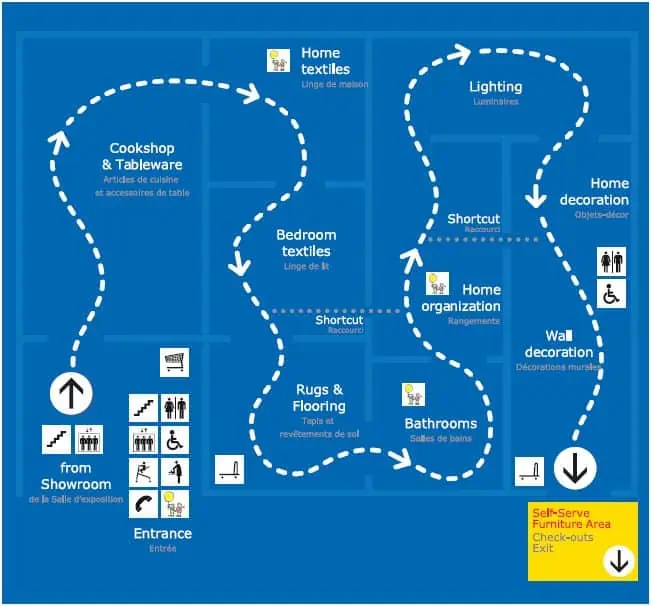
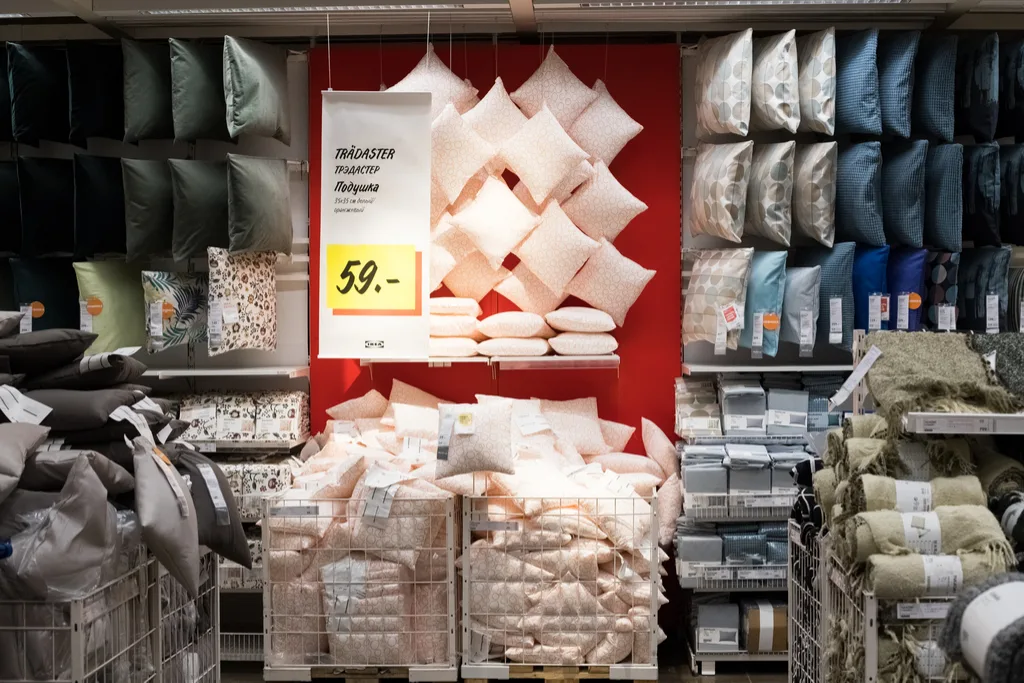
They use a technique known as “bulla bulls” in this regard.
This is where lots of items are jumbled and stacked in large bins to create the impression that many things are available.
They also have mastered the art of complimentary products.
So once you see one thing, you can’t help but purchase the accompanying items.
Democratic design
Ikea’s business model is built around “democratic design.”
This means that the company designs functional, stylish, and affordable furniture.
In addition, Ikea keeps its prices low by using flat-pack packaging, which reduces transportation costs, and using less expensive materials, such as particleboard and MDF.
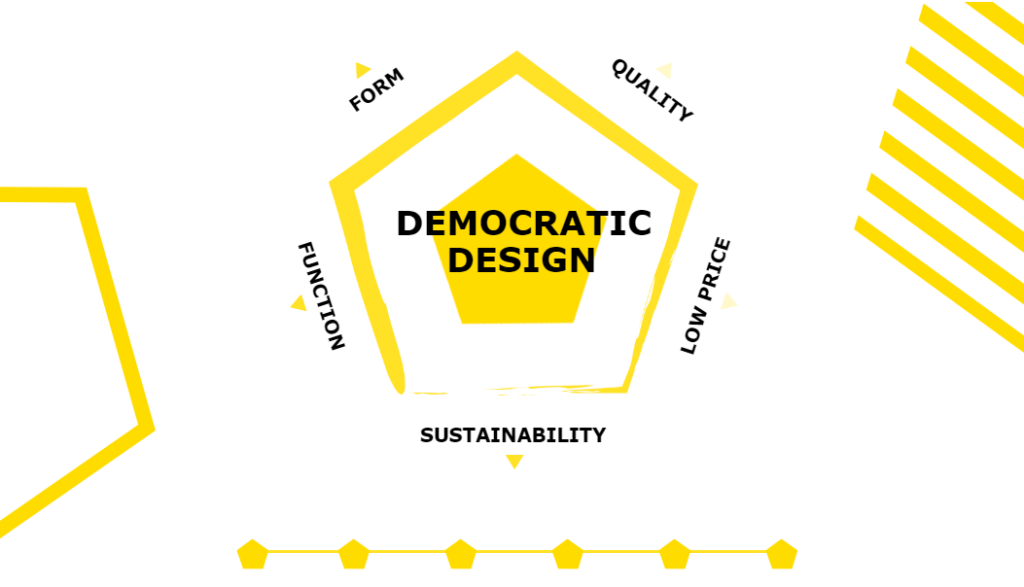
Now in today’s recessionary environment, this is especially relevant. It’s about one of the only retailers that are continually reducing prices.
Researchers that studied 16 years of their catalogues followed the price trajectory of the Poäng chair. In 1994 it was priced at $179. Now it could cost as little as $129. They are pretty incredible and genuinely looking out for their purpose.

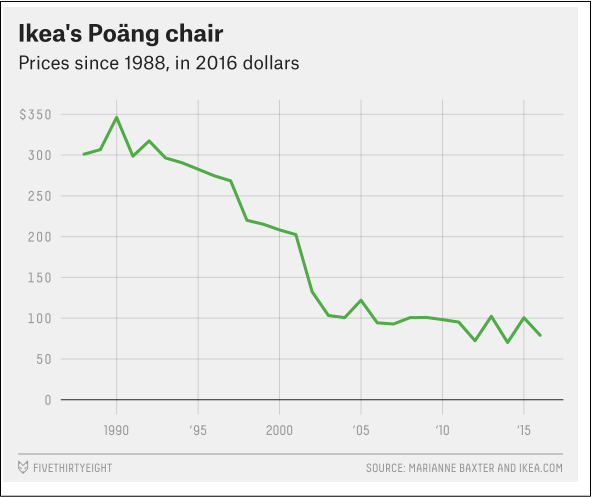
They are constantly pushing the boundaries of the product design and price. Often they start with a price point in mind and work backwards. For instance, the imagined a $1 LED bulb and then worked backwards to achieve it.
Learn more about democratic design here.
Made with love
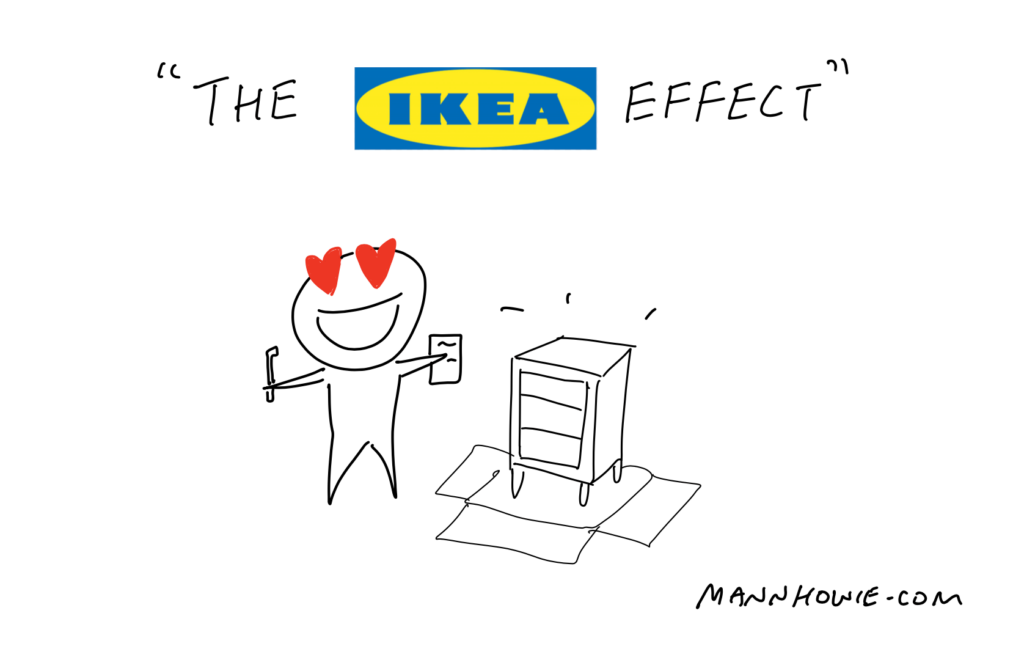
Have you heard of the IKEA effect? Well, much research shows that when you assemble something with your hands, you are more attribute a higher value to it.
So not only do the flat pack concept make the products cheaper, but the fact that you need also to do a little DIY makes you emotionally attached to your product.
A good analogy is with cake mixes. There was a time when you just needed to add water with cake mixes. However, the product didn’t do well as people didn’t feel like they did much. So the companies changed things up and made you add egg to the mix. Suddenly, people get more vested in the process.
It’s the same process.
Branding and comms
IKEA has a strong sense of values and purpose.
From its stance on sustainability to its quirky, yet lovable product names.
A great example of ones of its iconic adverts that was released a few years called the BookBook.
It’s a funny ad that takes the mick out of e-books and highlights their catalogue as a tasteful traditional book.
Localisation
IKEA recognises that at times it needs to localise its approach. For example, you can read how they localised their offering for the Indian market, here.
Summary
We can see that IKEA has put the customer at the centre of the thinking. As a result, developing its pricing, distribution experience, product design and communications approach takes time.
Above all, it knows the actual value of a £4 serving of meatballs, and I think it’s a real lesson so many brands still need to master.


